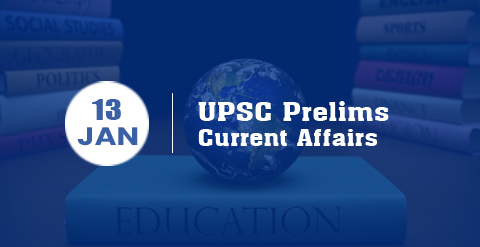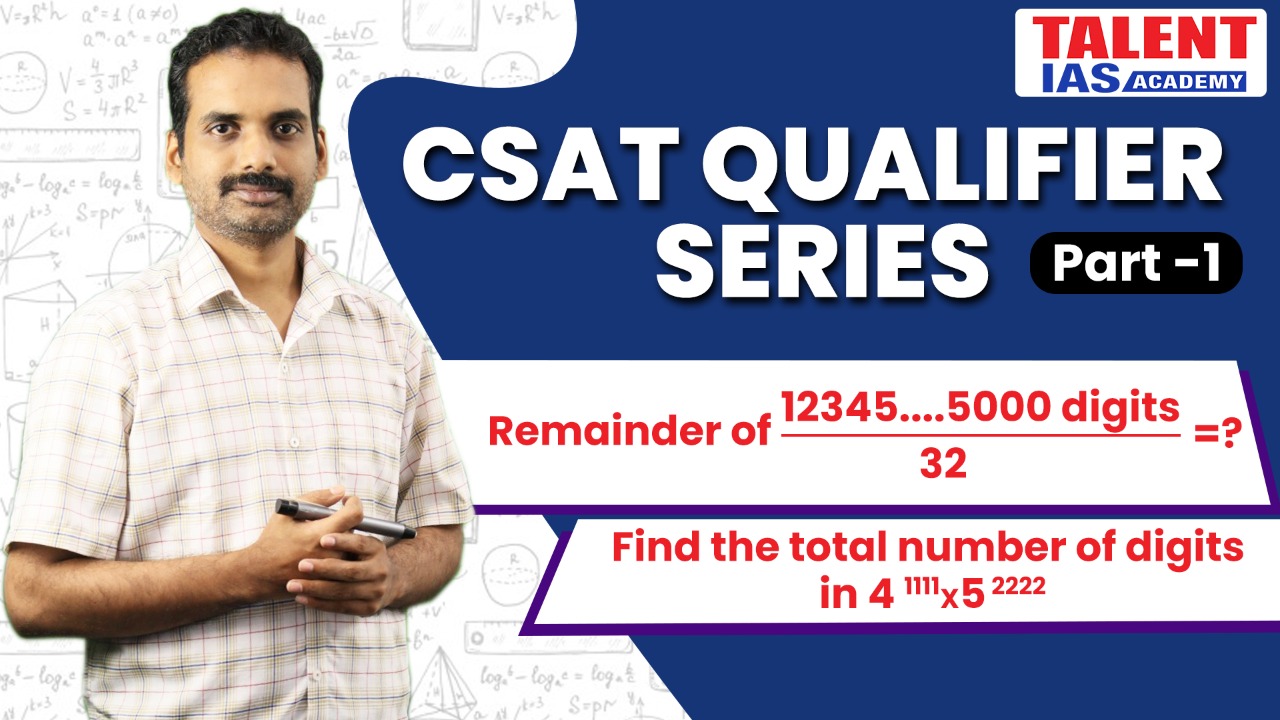Stupa
Relevance:
Archeological Survey of India discovered two 1200-year-old miniature Votive stupas (offered in fulfillment of a vow) near Sarai Tila mound within premises of Nalanda Mahavihara in Bihar.
About Stupa:
- Stupa (Sanskrit: heap) is a mound-like (hemispherical) burial structure containing relics of Buddhist monks. E.g. Sanchi Stupa built over Buddha relics.
- Architectural features of Stupa –
- A hemispherical mound or anda’s (egg) shaped dome
- A square railing or harmika Central pillar supporting a triple-umbrella form (chattra), representing three jewels of Buddhism.
- Enclosure wall with decorated gateways (toranas) at cardinal directions.
- A circular terrace (medhi) for ritual circumambulation.
About Nalanda Mahavihara:
- It is a UNESCO World Heritage Site with archaeological remains of a monastic and scholastic institution.
- Time period – 3rd century BCE to 13th century CE.
- Famous scholars at Nalanda – Gautam Buddha, Mahavira, Nagarjuna, Dharampala, Dinnaga, Jinamitra Santaraksita etc.
- Pilgrim monks – Hiuen Tsang, I-tsing etc.
- It prospered under Gupta Dynasty, Harsha of Kannauj and Pala Dynasty.
- It includes stupas, shrines, viharas (residential and educational buildings) and important art works in stucco, stone and metal.

Some Buddhist rock-cut caves are called Chaityas, while the others are called Viharas. What is the difference between the two? (2013)
- Vihara is a place of worship, while Chaitya is the dwelling place of the monks
- Chaitya is a place of worship, while Vihara is the dwelling place of the monks
- Chaitya is the stupa at the far end if the cave, while Vihara is the hall axial to it
- There is no material difference between the two
Reference: Times of India
Ram Setu
Relevance:
Centre seeks time from SC to respond to plea on Ram Setu. Also, Tamil Nadu assembly recently passed a resolution urging Centre to resume work on Sethusamudram Ship Canal project (SSCP).
About Ram Setu:
- Other Name – Adam’s bridge
- It is a 48-km chain of limestone shoals.
- Location – Between Pamban or Rameswaram Island, off the south-eastern coast of Tamil Nadu, and Mannar Island, off the north-western coast of Sri Lanka.
- Myth –
- While Hindus believe this is the bridge (setu) built by Lord Ram and his army to cross to Lanka and fight Ravan.
- As per Islamic legend, Adam used this bridge to reach Adam’s Peak in Sri Lanka, where he stood on one foot for 1,000 years in repentance.
- Scientists believe Ram Setu is a natural structure formed due to tectonic movements and sand getting trapped in corals.
Sethusamudram Shipping Canal Project (SSCP):
- It aims to create a shipping route across the Palk Straits between India and Sri Lanka by building an 83-km-long deep water channel.
- Suggested 2 channels– one across Adam’s Bridge and another through Palk Bay.
- SC, in 2007, had stayed the work for project and Centre was also willing to explore another route to SSCP without damaging Ram Setu.
- Significance –
- Reduce steaming distances between east and west coasts of India.
- Strengthen national security by improving navigation for Indian coast guards and naval ships.
- Concerns –
- Would destroy natural barrier between Bay of Bengal and Palk Bay.
- Oil and marine pollution associated with shipping traffic will aggravate ecological stress in region.
- Adam’s bridge holds religious sentiments for the people.
- Threats to coral reef platforms in Gulf of Mannar.
Reference: Indian Express
Rare Earth Elements
Relevance:
- Swedish state-owned mining company (LKAB) discovered more than one million tonnes of rare earth oxides in the northern area Sweden which is the largest known deposit in Europe.
- REE deposits were discovered in Arctic region of Kiruna, Sweden (home to world’s largest underground iron-ore mine).
Rare Earth Elements (REE):
- A set of 17 metallic elements on periodic table – 15 lanthanides + Scandium and Yttrium.
- 17 rare earths – cerium (Ce), dysprosium (Dy), erbium (Er), europium (Eu), gadolinium (Gd), holmium (Ho), lanthanum (La), lutetium (Lu), neodymium (Nd), praseodymium (Pr), promethium (Pm), samarium (Sm), scandium (Sc), terbium (Tb), thulium (Tm), ytterbium (Yb), and yttrium (Y).
- Applications – Consumer electronics, computers and networks, communications, clean and green energy, advanced transportation, healthcare, environmental mitigation, national defence, space shuttle components, jet engine turbines, and drones etc.
- Properties – High luster, high electrical conductivity, luminescence, magnetism etc.
- Occurrence – Heavy REE (higher atomic weights) are less common as compared to Light REE.
- Extraction – Involves complex processing and intensive environmental effects.
- Scenario –
- At present more than 80% of the world’s rare earths processing capacity is in China.
- India produces only 1% of global output despite having around 6% of world’s reserves.
- Uses of REE –
- Scandium: Televisions and fluorescent lamps
- Yttrium: In drugs to treat rheumatoid arthritis and cancer.
- Cerium: Space Research (NASA’s Space Shuttle Programme)
- Neodymium and Dysprosium: Wind turbine motors, electric vehicles
Recently, there has been a concern over the short supply of a group of elements called ‘rare earth metals.’ Why? (2012)
- China, which is the largest producer of these elements, has imposed some restrictions on their export.
- Other than China, Australia, Canada and Chile, these elements are not found in any country.
- Rare earth metals are essential for the manufacture of various kinds of electronic items and there is a growing demand for these elements.
Which of the statements given above is/are correct?
- 1 only
- 2 and 3 only
- 1 and 3 only
- 1, 2 and 3
Reference: Indian Express
MATSYA 6000
Relevance:
As a part of Samudrayaan Mission, under MoES, a self-propelled manned submersible (MATSYA 6000) will carry three persons to a depth of 6000 meters for exploration of deep-sea resources.
MATSYA 6000:
- Designed and developed by – National Institute of Ocean Technology (NIOT), Chennai under Ministry of Earth Sciences
- It has an endurance of 12 hours under normal operation and 96 hours in case of emergency.
- It is being developed under Deep Ocean Mission (DOM).
Deep Ocean Mission:
- Aim – To explore deep ocean for resources and develop deep sea technologies for sustainable use of ocean resources.
- It will be a mission mode project to support Blue Economy initiatives.
- Blue Economy is sustainable use of ocean resources for economic growth, improved livelihoods etc. Its size in India is about 4% of the GDP.
- Nodal ministry – Ministry of Earth Sciences
- Implementation period – 5 Years (Approved in 2021)
- Major components –
- Development of Manned Submersible: MATSYA 6000
- Development of Technologies for Deep Sea Mining: Integrated Mining System for mining polymetallic nodules.
- Development of Ocean Climate Change Advisory Services.
- Technological innovations for exploration and conservation of deep-sea biodiversity.
- Deep Ocean Survey and Exploration: Identifies multi-metal Hydrothermal Sulphides mineralization along the Indian Ocean mid-oceanic ridges.
- Energy and freshwater from Ocean: Ocean Thermal Energy Conversion (OTEC) powered desalination plants
- Advanced Marine Station for Ocean Biology.
If National Water Mission is properly and completely implemented, how will it impact the country?
- Part of the water needs of urban areas will be met through recycling of waste-water.
- The water requirements of coastal clues with inadequate alternative sources of water will be met by adopting appropriate technologies that allow for the use of ocean water.
- All the rivers of Himalayan origin will be linked to the rivers of peninsular India.
- The expenses incurred by farmers for digging bore-wells and for installing motors and pump-sets to draw ground-water will be completely reimbursed by the Government.
Select the correct answer using the codes given below:
- 1 only
- 1 and 2 only
- 3 and 4 only
- 1, 2, 3 and 4
Reference: PIB
Basmati Rice
Relevance:
For the first time in India, the Food Safety and Standards Authority of India (FSSAI) has specified the identity standards for Basmati Rice which will be enforced with effect from 01 August 2023.
Basmati Rice:
- It is a premium variety of rice has origin in the Himalayan foothills of the Indian sub-continent.
- Characteristics –
- Long grain size
- Fluffy texture
- Unique inherent aroma and flavour due to the presence of a chemical called 2-acetyl-1-pyrroline.
- Cultivation – Himachal Pradesh, Punjab, Haryana, Delhi, Uttarakhand, Madhya Pradesh, UT of Jammu and Kashmir and western Uttar Pradesh.
- Factors contributing to its uniqueness –
- Agro-climatic conditions
- Method of harvesting, processing and ageing
- Threat – Adulteration such as undeclared blending of other non-basmati varieties of rice.
- Supply and demand – It is widely consumed both domestically and globally and India accounts for 2/3rd of its global supply.
Standards for Basmati Rice:
- Notified under – Food Safety and Standards (Food Products Standards and Food Additives) 1st Amendment Regulations, 2023.
- Specified Standards –
- It shall possess the natural fragrance characteristic of basmati rice
- It should be free from artificial colouring, polishing agents and artificial fragrances.
- Specified identity and quality parameters –
- Average size of Basmati grains
- After cooking elongation ratio
- Maximum limits of moisture, amylose content, uric acid, damaged grains and incidental presence of other non-basmati rice etc.
Consider the following statements: (2018)
- The Food Safety and Standards Act, 2006 replaced the Prevention of Food Adulteration Act, 1954.
- The Food Safety and Standards Authority of India (FSSAI) is under the charge of Director General of Health Services in the Union Ministry of Health and Family Welfare.
Which of the statements given above is/are correct?
- 1 only
- 2 only
- Both 1 and 2
- Neither 1 nor 2
Reference: PIB








